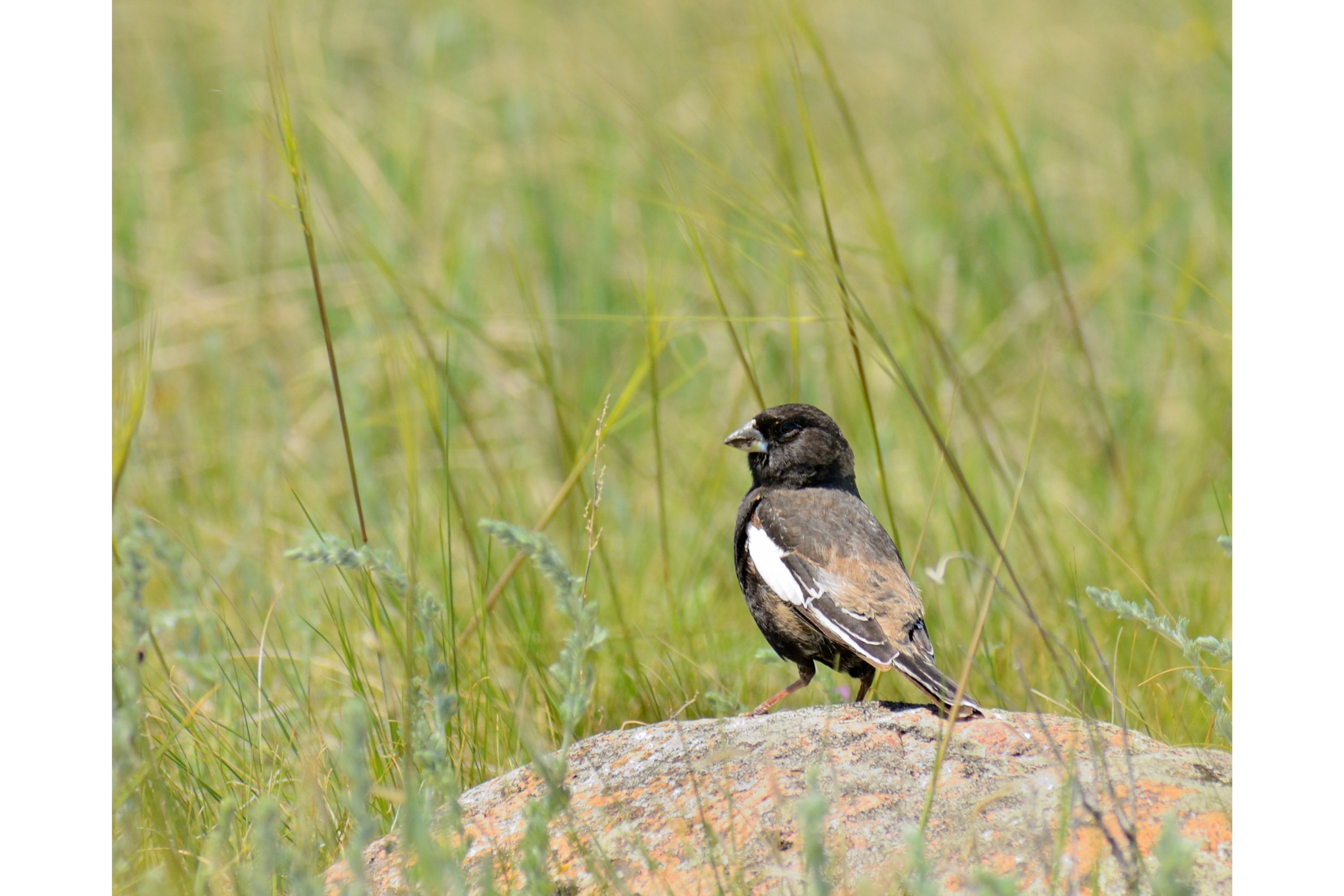Lark bunting
(Calamospiza melanocorys)

Description
The lark bunting (Calamospiza melanocorys) is a medium-sized American sparrow native to central and western North America. It is also the state bird of Colorado. The lark bunting was monotypic, the only member of the genus Calamospiza, and is not closely related to any other genera. It was first described by J. K. Townsend in 1837, from a specimen collected on a trip he took with Thomas Nuttall, under the name Fringilla bicolor. This is a preoccupied name, so Leonhard Hess Stejneger renamed the species in 1885 Calamospiza melanocorys. By then, the lark bunting had already been given its own genus, the one it is still placed in, by Charles Lucien Bonaparte in 1838. Lark buntings are small songbirds, with a short, thick, bluish bill. There is a large patch of white on the wings and they have a relatively short tail with white tips at the end of the feathers. Breeding males have an all black body with a large white patch on the upper part of the wing. Nonbreeding males and females look similar and are grayish brown with white stripes. Measurements: Length: 5.5-7.1 in (14-18 cm) Weight: 1.3-1.5 oz (35.3-41.3 g) Wingspan: 9.8-11.0 in (25-28 cm) The lark bunting is the most prevalent of the passerine species found in the grasslands of North America. Their breeding habitat is prairie regions in central Canada and the mid-western United States. These birds migrate in flocks to winter southern Texas, Arizona and the high plateau of northern Mexico in the fall. Lark buntings primarily forage on the ground, mainly eating insects in summer and seeds in winter; they sometimes take short flights in pursuit of insects. Outside of the nesting season, they often feed in flocks. The lark bunting has been the state bird of Colorado since 1931. There has been a decrease in population with the loss of natural prairie habitat.
Taxonomic tree:







